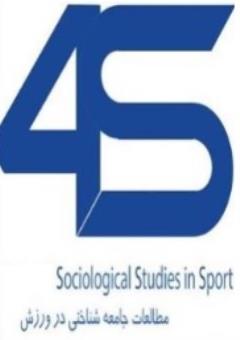-
-
List of Articles
-
Open Access Article
1 - Sociological Imagination and Sports: a Review of Concepts and Research Opportunities
Rasool Norouzi Seyed Hossini -
Open Access Article
2 - The Analysis match of identity Form and content advertising Sport with Strategic purporsts Islamic-Iranian model of progress
HAMID MOEINFARD Zahra Sohrabi -
Open Access Article
3 - The effect of social norms of smartphone use on interpersonal relationships with the mediating role of smartphone addiction and shyness
davood Mirbroon Kazem cheragh birkandi -
Open Access Article
4 - Designing a model of the effect of professional ethics of physical education and sports science teachers on social well-being with the mediating role of media literacy
ali karimi hematallah bastami arsalan Choulaki fahimeh momenifar -
Open Access Article
5 - The role of self-management skills in organizational inertia with the mediation of transformational leadership in the employees of the Ministry of Sports and Youth
Mahdi Ebrahimbysalami Saeid Sedaghati Mohammad Hasan Ferdowsi vali nowzari -
Open Access Article
6 - Effectiveness of teaching positive emotions and anger control skills on the physical and mental health of physical education teachers in Isfahan city
zahra mosayebi Ashraf Mirheydary Parisa Niazy -
Open Access Article
7 - Designing a sociological model for the development of the range of sports tourism in the northwest of the country
farid pourbeirami hir Mehrdad Moharamzade Masoud Imanzadeh Simin Esgandari Dastgiri -
Open Access Article
8 - Compilation of the strategic themes of sport in Kohgiluyeh and Boyer Ahmad provinces: Geographic sociological approac
elham behzadi seif abab Seyad Ehsan Amirhosseini Ali Pirzad
-
The rights to this website are owned by the Raimag Press Management System.
Copyright © 2021-2025







